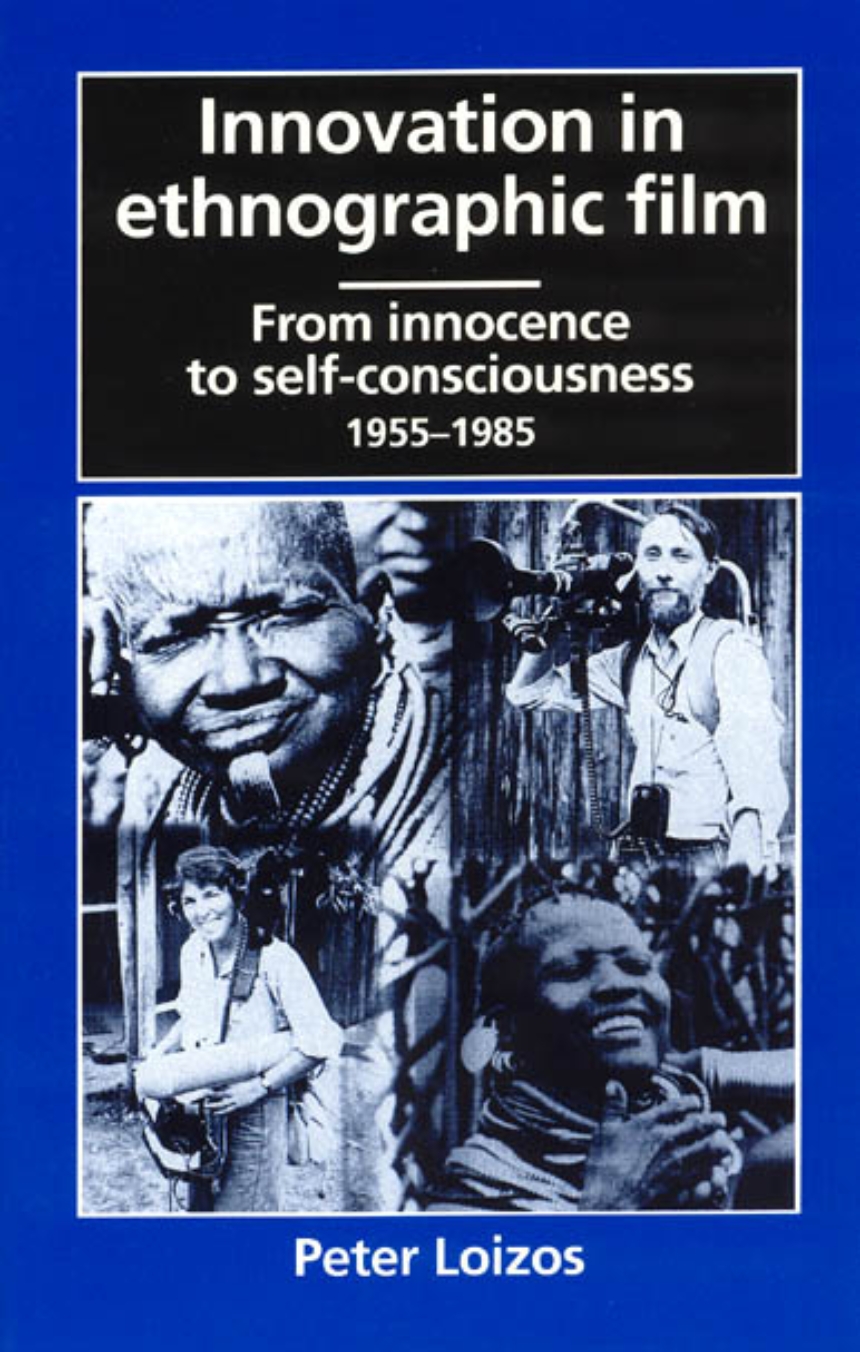Innovation in Ethnographic Film
From Innocence to Self-Consciousness, 1955-1985
9780226492278
9780226492261
Innovation in Ethnographic Film
From Innocence to Self-Consciousness, 1955-1985
In the first coprehensive introduction to the nature and development of ethnographic film, Peter Loizos reviews fifty of the most important films made between 1955 and 1985. Going beyond programmatic statements, he analyzes the films themselves, identifying and discussing their contributions to ethnographic documentation.
Loizos begins by reviewing works of John Marshall and Timothy Asch in the 1950s and moves through those of Jean Rouch, Robert Gardner, and many more recent filmmakers. He reveals a steady course of innovations along four dimensions: production technology, subject matter, strategies of argument, and ethnographic authentication. His analyses of individual films address questions of realism, authenticity, genre, authorial and subjective voice, and representation of the films’ creators as well as their subjects.
Innovation in Ethnographic Film, as a systematic and iluminating review of developments in ethnographic film, will be an important resource for the growing number of anthropologists and other scholars who use such films as tools for research and teaching.
Loizos begins by reviewing works of John Marshall and Timothy Asch in the 1950s and moves through those of Jean Rouch, Robert Gardner, and many more recent filmmakers. He reveals a steady course of innovations along four dimensions: production technology, subject matter, strategies of argument, and ethnographic authentication. His analyses of individual films address questions of realism, authenticity, genre, authorial and subjective voice, and representation of the films’ creators as well as their subjects.
Innovation in Ethnographic Film, as a systematic and iluminating review of developments in ethnographic film, will be an important resource for the growing number of anthropologists and other scholars who use such films as tools for research and teaching.
Table of Contents
List of Figures
Preface
Acknowledgements
1. Innovation in ethnographic film, 1955-85
Documentary films
Ethnographic documentary films
Realism
Innovations
2. For the record: documentation filming from innocent realism to self-consciousness
The difficulties in documentation
Marshall’s !Kung/San Films
The Yanomami films of Asch and Chagnon
Australian documentation initiatives
Trobriand Cricket
The Jero Tapakan Project
3. Challenging documentation-realism: three early experiments by Jean Rouch
Moi, Un Noir
La Pyramide humaine
Chronique d’un été
Conclusion
4. Constructions from real lives: biographies and portraits
Imaginero
Lorang’s Way: A Turkana Man
N!ai: the story of a !Kung woman
Celso and Cora
Amir: An Afghan refugee musician’s life in Peshawar, Pakistan
Conclusion
5. Complex constructions with subjective voices: East Africa, 1971-76
The MacDougalls’ background
To Live with Herds: A dry season among the Jie
The Wedding Camels: A Turkana marriage
Demanding texts
Maragoli
6. The Loita Maasai films: televised culture
Documentation of a culture
Masai Women
Masai Manhood
The Woman’s Olamal: The Social Organization of a Maasai Fertility Ceremony
7. Robert Gardner in Tahiti, or the rejection of realism
Gardner’s formation
Dead Birds
Rivers of Sand
Deep Hearts
Forest of Bliss
Conclusion
8. Complex constructions with subjective voices: Australia, 1972-80
Coniston Muster: scenes from a stockman’s life
Mourning for Mangatopi and Goodbye, Old Man
The House Opening
Waiting for Harry
The challenge to AIAS ethnographic films
Epilogue
Appendix 1
The Göttingen Institute for Scientific Films
Appendix 2
The Diary of a Maasai Village
Appendix 3
Nichols on pornography and ethnography
References
Film references
Index
Preface
Acknowledgements
1. Innovation in ethnographic film, 1955-85
Documentary films
Ethnographic documentary films
Realism
Innovations
2. For the record: documentation filming from innocent realism to self-consciousness
The difficulties in documentation
Marshall’s !Kung/San Films
The Yanomami films of Asch and Chagnon
Australian documentation initiatives
Trobriand Cricket
The Jero Tapakan Project
3. Challenging documentation-realism: three early experiments by Jean Rouch
Moi, Un Noir
La Pyramide humaine
Chronique d’un été
Conclusion
4. Constructions from real lives: biographies and portraits
Imaginero
Lorang’s Way: A Turkana Man
N!ai: the story of a !Kung woman
Celso and Cora
Amir: An Afghan refugee musician’s life in Peshawar, Pakistan
Conclusion
5. Complex constructions with subjective voices: East Africa, 1971-76
The MacDougalls’ background
To Live with Herds: A dry season among the Jie
The Wedding Camels: A Turkana marriage
Demanding texts
Maragoli
6. The Loita Maasai films: televised culture
Documentation of a culture
Masai Women
Masai Manhood
The Woman’s Olamal: The Social Organization of a Maasai Fertility Ceremony
7. Robert Gardner in Tahiti, or the rejection of realism
Gardner’s formation
Dead Birds
Rivers of Sand
Deep Hearts
Forest of Bliss
Conclusion
8. Complex constructions with subjective voices: Australia, 1972-80
Coniston Muster: scenes from a stockman’s life
Mourning for Mangatopi and Goodbye, Old Man
The House Opening
Waiting for Harry
The challenge to AIAS ethnographic films
Epilogue
Appendix 1
The Göttingen Institute for Scientific Films
Appendix 2
The Diary of a Maasai Village
Appendix 3
Nichols on pornography and ethnography
References
Film references
Index
